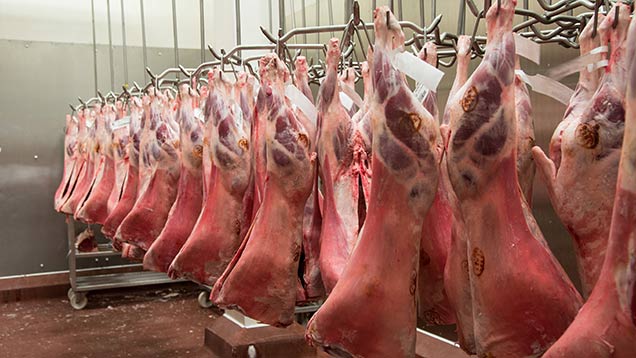Livestock 2015: Farmers lose lamb price share to supermarkets
 ©John Eveson/Rex Shutterstock
©John Eveson/Rex Shutterstock Supermarkets have been taking a bigger share of lamb retail prices while farmer returns have crashed in the last year, according to new figures.
The producers’ share of the lamb retail price has dropped from 60% last June to 50% this year.
On-shelf prices have followed prime lamb prices downwards but not as dramatically.
See also: Strong sterling hampers ‘sound’ lamb trade
Levy board AHDB Beef and Lamb reports all cuts to be cheaper than 2014, except legs. Diced lamb has seen the biggest drop, with prices down 12%.
Ahead of the Livestock Event, NFU livestock board chairman Charles Sercombe said the lamb market was critically low this spring, and both farmers and consumers were getting a raw deal.
The NFU is asking retailers to:
- Explain when their British lamb sourcing season starts and ends
- Offer direct contracts to livestock farmers
- Work on new products to make shoppers buy lamb
- Ensure British lamb labelling is clear and uses the Red Tractor logo.
“Farmers need a sustainable price for their product that encourages them to invest in future production so that British lamb can be on British shelves for the consumer to enjoy in the years ahead,” he said.
“We know that demand for lamb is falling year on year, so I call on retailers to give pride of place to British lamb on their shelves, and to join the industry in promoting this fantastic product during the spring and summer – our peak season when our product is at its best.”
The strength of sterling, earlier-than-usual New Zealand imports, and plentiful UK lamb numbers have combined to pressure prices in 2015.
Last week the British deadweight standard quality quotation (SQQ) slumped 26.5p/kg to 384.9p/kg, while the liveweight average dropped 17.7p/kg to 157.2p/kg.
Auction market prices are down more than 50p/kg on the year, while deadweight values are more than 84p/kg lower.
